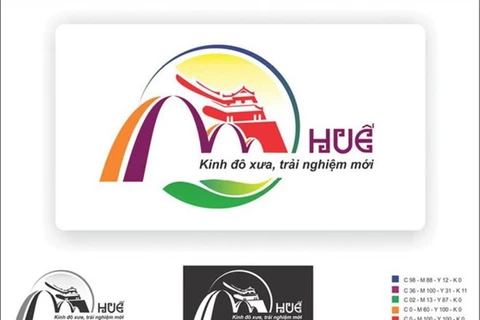
| The writing of King Minh Menh (1791-1841) is one among 100 calligraphic works displayed at the exhibition. (Source: vietnamnet.vn) |
Hanoi (VNS/VNA) - An exhibition of handwritten notes penned by Nguyen Dynasty Kings (1802-1945) on chau ban (official administrative papers) is ongoing in Hanoi.
The exhibition is titled Calligraphy of Nguyen Dynasty’s Kings and opened last week to celebrate the Vietnam Archives Day (January 3). Besides the original documents, the exhibition also offers translations and explanations in Vietnamese and English.
“The spring comes bringing good fortune, I am happy to see reports of favourable weather. Clasping my hands, I pray for a bumper crop across the whole country,” King Minh Menh (1791-1841) noted in a report in 1826.
It’s one of 100 notes signed by the 10 kings of the Nguyen Dynasty, providing viewers a better understanding of literary and calligraphic styles back then, and the thoughts and opinions of the kings about specific issues such as appointing mandarins, using the national budget, organising exams and punishing criminals.
They were selected from 85,000 documents including laws, decrees, edicts and instructions for resolving problems in various fields such as politics, military affairs, foreign affairs, economics, society and culture, all listed in the Asian-Pacific Region’s Memory of the World Programme in 2014.
The exhibits also provide a reference to administrative documents of the past while revealing interesting facts about the country’s social life from the early 19th to the mid-20th centuries.
Historian Duong Trung Quoc said the exhibition provided an opportunity to learn more about history and contemplate the handwritten notes of the kings and their seals on do (poohnah) paper.
“Chau ban are unique thanks to the information they contain and the fact they were written by the kings themselves,” said Quoc.
“The kings used chau so (a strike) to cross out words they disagreed and chau khuyen (a circle) to express their approval for specific points. In some cases, they wrote in red ink to give directions or comments, which are called chau phe.”
“Although it was not their intention, their writings are beautiful and express the aesthetic sense and skills of the country’s leaders,” said Quoc.
Nguyen Tuan Cuong from the Institute of Sino-Nom Studies said the value of the exhibits went beyond simple administrative documents because the exhibition had attracted both history and calligraphy lovers.
“They are artistic calligraphic works indeed with strong strikes and a bright and balanced structure,” he said.
Hosted by the State Records and Archives Department, the exhibition is open to the public for free at the National Archives Centre No1, 5 Vu Pham Ham street, Cau Giay district, Hanoi until the end of April./.
VNA























